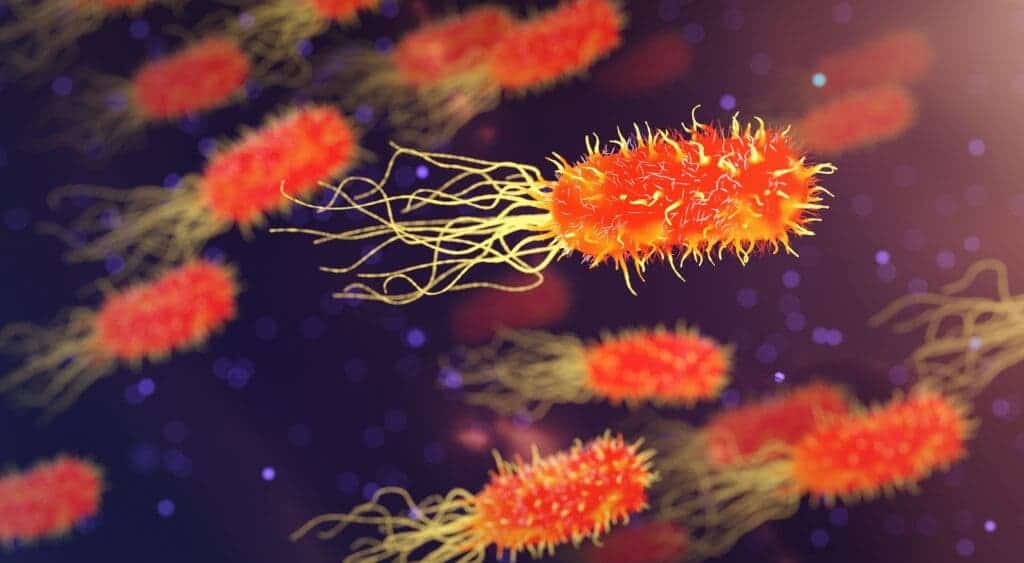Ultrasound waves — acoustic waves whose frequencies extend over the range of human hearing — have been used before to successfully treat cancer cells. But this is a broad-brush approach in which high-intensity bursts of ultrasound heat up tissue, killing both cancer and normal cells in the targeted area. Researchers at Caltech have figured out a better way to use ultrasound to seek and destroy tumors while keeping healthy tissue safe. They did so with the help of an unlikely ally: bacteria.

Although bacteria play a major role in maintaining our health, especially those that naturally colonize our guts, these microorganisms typically have a bad reputation for causing infection and life-threatening diseases. The notion that bacteria could be harnessed to kill cancer sounds outlandish, so it might be surprising to learn that the idea is at least a hundred years old.
During the 19th century, American surgeon William Coley first noticed patients for whom bacterial colonies close to their tumors had an anti-cancer effect. More recently, scientists found that when certain bacteria are injected into the bloodstream, they are quickly flushed out by the immune system except in areas with tumors. That’s because cancer is notorious for weakening the immune system and disabling its defenses in order to save itself.
Seeking to capitalize on this bizarre relationship between certain bacteria and cancer cells, researchers have proposed all sorts of therapies. One idea would be delivering chemotherapy drugs directly to cancer cells via bacteria. But the problem is that this blanket approach also hurts healthy cells.
Researchers at Caltech led by biochemist Mikhail Shapiro thought of a clever way to leverage bacterial anti-cancer properties. They genetically modified the common E. coli bacterium to ultrasound-triggered temperature spikes. When the bacteria’s temperature reaches around 42-43 degrees Celsius, a pair of genes express anti-cancer molecules similar to the immune system’s antibodies that disable proteins that help cancer cells proliferate. Since the human body’s temperature is around 37 degrees Celsius, the engineered strains do not begin to release their anti-tumor nanobodies when they’re initially injected into a person.
“The goal of this technology is to take advantage of the ability of engineered probiotics to infiltrate tumors, while using ultrasound to activate them to release potent drugs inside the tumor,” Shapiro says.
“Focused ultrasound allowed us to activate the therapy specifically inside a tumor,” says Mohamad Abedi, a former Ph.D. student in Shapiro’s group who co-led the project and is now a postdoctoral fellow at the University of Washington. “This is important because these potent drugs, which are so helpful in tumor treatment, can cause significant side effects in other organs where our bacterial agents may also be present.”
In an experiment, immunocompromised mice with non-Hodgkin lymphoma were infected with the modified E. coli then had ultrasound bursts focused on the tumor sites. The researchers noticed how the tumors stopped growing and even shrunk in two weeks. Both ultrasound and the bacteria were necessary to act together for these effects to be observed.
These promising results invite clinical trials to test this kind of treatment on human patients, although the researchers caution that the therapy may not translate as well for humans. In the meantime, Shapiro and colleagues want to refine their technique. One major upgrade they have in mind is tagging the bacteria so they can track their location in the body in real-time. Once there are signs the bacteria have established a colony at the tumor site, the proper ultrasound frequencies can be fired.
The same procedure could also be used to target other diseases like cystic fibrosis, which affects the lungs.
“This is a very promising result because it shows that we can target the right therapy to the right place at the right time,” Shapiro says. “But as with any new technology there are a few things to optimize, including adding the ability to visualize the bacterial agents with ultrasound before we activate them and targeting the heating stimuli to them more precisely.”
The study appeared in the journal Nature Communications.


